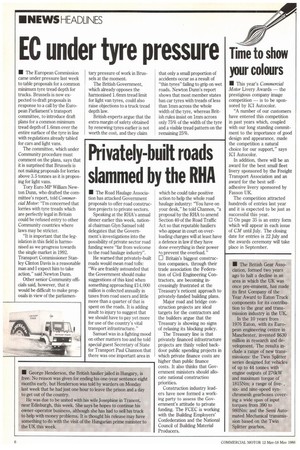EC under tyre pressure
Page 16

If you've noticed an error in this article please click here to report it so we can fix it.
• The European Commission came under pressure last week to table proposals for a common minimum tyre tread depth for trucks. Brussels is now expected to draft proposals in response to a call by the European Parliament's transport committee, to introduce draft plans for a common minimum tread depth of 1.6mrn over the entire surface of the tyre in line with regulations already tabled for cars and light vans.
The committee, which under Community procedure must comment on the plans, says that it is surprised that Brussels is not making proposals for lorries above 3.5 tonnes as it is proposing for Light vans.
Tory Euro MP William Newton Dunn, who drafted the committee's report, told Commercial Motor: "I'm concerned that lorries with tyre treads which are perfectly legal in Britain could be refused entry to other Community countries where laws may be stricter.
"It is important that the legislation in this field is harmonised as we progress towards the single market in 1992. Transport Commissioner Stanley Clinton Davis is a reasonable man and I expect him to take action," said Newton Dunn.
Other senior Community officials said, however, that it would be difficult to make proposals in view of the parliamen tary pressure of work in Brussels at the moment.
The British Government, which already opposes the harmonised 1.6mrn tread limit for light van tyres, could also raise objections to a truck tread depth law.
British experts argue that the extra margin of safety obtained by renewing tyres earlier is not worth the cost, and they claim that only a small proportion of accidents occur as a result of "thin tyres" failing to grip on wet roads. Newton Dunn's report shows that most member states ban car tyres with treads of less than lmm across the whole width of the tyre, whereas British rules insist on lmm across only 75% of the width of the tyre and a visible tread pattern on the remaining 25%.
















































































































